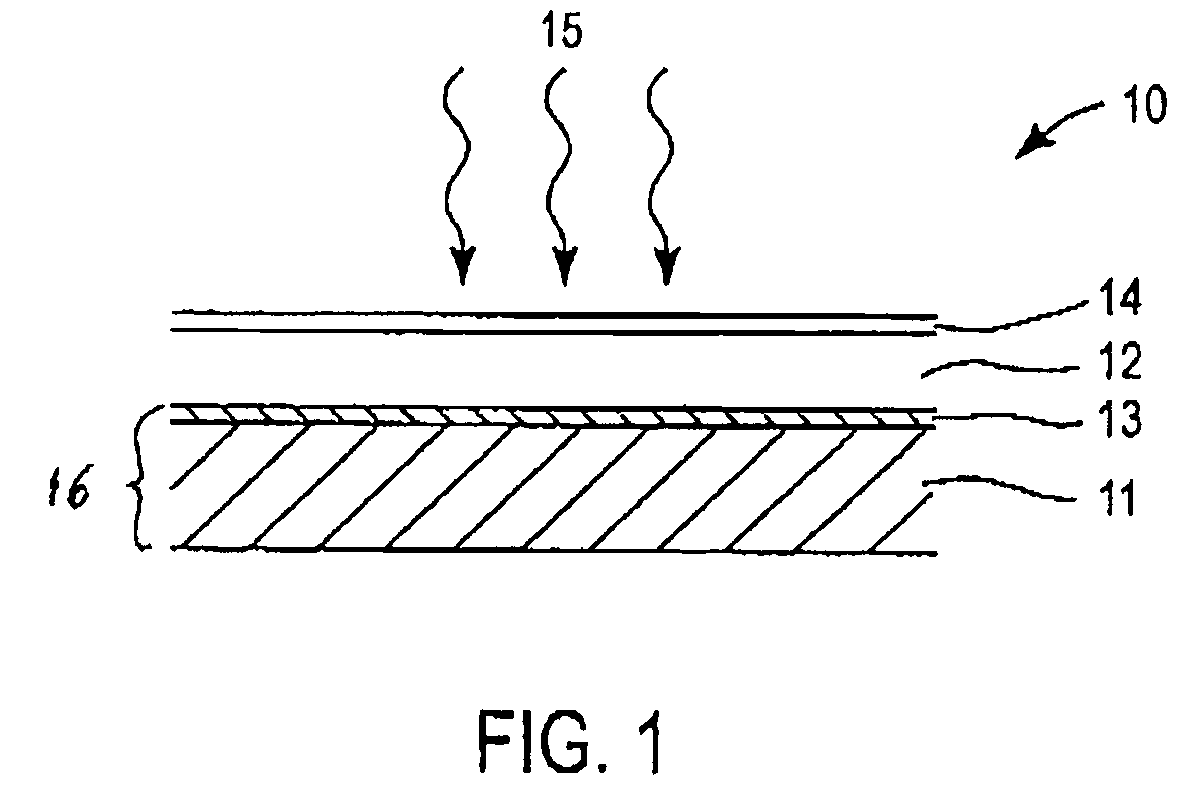Finger pattern formation for thin film solar cells
a solar cell and finger pattern technology, applied in the field of thin film solar cell finger pattern formation, can solve the problems of high cost of electricity generated by silicon-based solar cells, large shadow loss of solar cells, and limited screen printing technique in terms of narrow finger production,
- Summary
- Abstract
- Description
- Claims
- Application Information
AI Technical Summary
Problems solved by technology
Method used
Image
Examples
Embodiment Construction
[0020]In one embodiment, the present invention forms a highly conductive metallic foil finger pattern on a solar cell structure without causing excessive shadow loss. This is achieved by transferring a highly conductive metal foil on the surface of the solar cell in the form of a finger pattern and employing a transparent conductive layer which has adhesive characteristics to attach the finger pattern on the solar cell surface. The transparent conductive layer is substantially transparent in a wavelength range of 0.45-1.2 micrometers, having an optical transmission of more than about 70%. The method will now be discussed by describing a method of forming a finger pattern or grid pattern on the device 10 which is shown in detail in FIG. 1.
[0021]Referring to FIG. 2A, the device 10 (details of the device are shown in FIG. 1) on which the finger pattern will be formed may comprise a transparent material at its top surface 20A. As described before in reference to FIG. 1, the top surface ...
PUM
| Property | Measurement | Unit |
|---|---|---|
| temperature | aaaaa | aaaaa |
| thickness | aaaaa | aaaaa |
| width | aaaaa | aaaaa |
Abstract
Description
Claims
Application Information
 Login to View More
Login to View More - R&D
- Intellectual Property
- Life Sciences
- Materials
- Tech Scout
- Unparalleled Data Quality
- Higher Quality Content
- 60% Fewer Hallucinations
Browse by: Latest US Patents, China's latest patents, Technical Efficacy Thesaurus, Application Domain, Technology Topic, Popular Technical Reports.
© 2025 PatSnap. All rights reserved.Legal|Privacy policy|Modern Slavery Act Transparency Statement|Sitemap|About US| Contact US: help@patsnap.com



